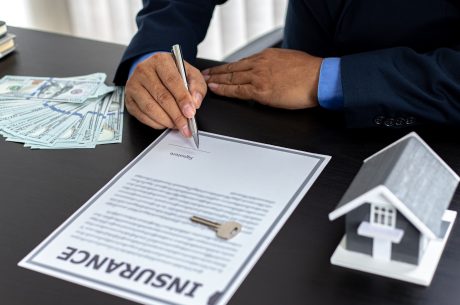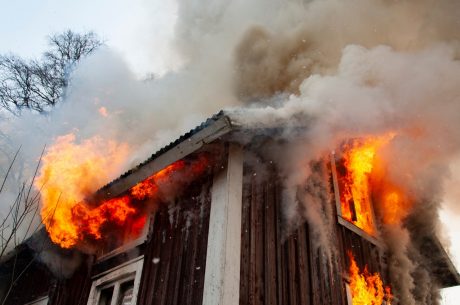A house fire can be one of the most devastating events a property owner will ever face. The physical destruction is obvious, but what’s often more difficult to manage is the emotional and logistical chaos that follows. Suddenly, the place you considered safe and familiar becomes hazardous and unrecognizable. Fortunately, there is a structured recovery plan that can help: a professional restoration process designed to bring safety, cleanliness, and comfort back into your space.
How Restoration Experts Assess the Damage
Once the fire is out and the area is safe, professionals begin with a fire damage assessment. Restoration specialists conduct a thorough inspection of all affected areas, even those far from the flames. Smoke, soot, and water can travel extensively through vents, crawlspaces, and walls. While it may seem like only the charred areas are of concern, fire damage can be surprisingly deceptive. For instance, smoke particles can cling to ductwork and ceilings, while water used to put out the fire might seep through walls and compromise structural integrity.
Professionals use tools like moisture meters, infrared cameras, and air quality monitors to ensure nothing is missed. This initial assessment not only determines the restoration timeline but also helps prioritize what needs urgent attention and what can be restored versus replaced during the fire damage restoration process.
In many cases, insurance adjusters collaborate with restoration teams at this stage to begin documentation for claims. This makes the initial inspection even more critical for a smooth and accurate recovery plan.
Inside the Fire Cleanup Process: What Happens First
Once the evaluation is complete, stabilization begins. This includes securing any openings (like broken windows or holes in the roof), shutting off unsafe utilities, and putting safety barriers in place to prevent further risk to residents or workers. Only then does the fire cleanup process formally begin.
Professionals start by removing debris and clearing out items that are either destroyed or dangerous to keep on-site. In some cases, even seemingly “clean” items may be contaminated and require careful disposal. This phase often involves setting up negative air chambers to prevent cross-contamination.
HEPA vacuums, ozone machines, and chemical sponges help extract smoke residue and soot particles from surfaces and air. Depending on the severity, contents of the property, like furniture, documents, or electronics, may be packed out for off-site cleaning and restoration.
This not only allows for safer cleaning but also protects salvageable belongings while the structure itself is repaired. Additionally, special attention is given to textile items like carpets, drapes, and clothing, as these can harbor smoke odors and chemical residues long after the flames are gone.
Restoring What Water and Fire Leave Behind
One of the most overlooked aspects of fire recovery is water damage. Ironically, the effort to save your home often adds new threats. Water used by firefighters seeps into wood, drywall, and subfloors, setting the stage for rot, mold, and structural damage if not removed promptly.
Special equipment such as submersible pumps, dehumidifiers, and air movers is used during this step to dry out the building thoroughly. Moisture mapping ensures that every affected area, even those hidden behind walls or under floors, is addressed properly. In some cases, flooring may need to be removed entirely to expose soaked underlayment or insulation.
This aspect of fire damage restoration not only prevents future issues but also ensures repairs are being built on a dry, stable foundation. Surfaces are then treated with antimicrobial sprays and sealants to kill bacteria and stop mold spores from developing.
Even after the area looks dry, professionals continue monitoring for days to confirm humidity levels are within safe thresholds. This step lays the groundwork for every phase that follows—from rebuilding walls to refinishing floors—and ensures long-term structural safety.

Removing Smoke, Soot, and Toxic Contaminants
Soot and smoke damage can be even more dangerous than the fire itself. Microscopic particles infiltrate HVAC systems, adhere to walls, and linger in fabrics. These particles are often acidic and, if left untreated, can cause long-term damage and serious health issues.
During this phase of fire damage restoration, specialized techniques are used to eliminate these toxic residues. Dry ice blasting and soda blasting help remove soot from hard surfaces without damaging the underlying materials. For soft goods, ozone treatments or thermal fogging are used to break down odor molecules and decontaminate fibers. Even areas far from the actual flames can carry smoke damage.
The fire cleanup process includes a full scan of the entire property, including attics, basements, and air ducts, to ensure nothing is missed. What’s crucial here is that restoration teams don’t simply mask odors—they remove the cause of those odors at a molecular level. This is especially important for families with children, pets, or respiratory conditions like asthma. Once completed, indoor air quality is tested to confirm that the environment is safe for reoccupation.
Rebuilding and Preventing Future Fire Risks
The final stage in any recovery project is reconstruction. This can range from simple patching and repainting to full-scale remodeling. Rebuilding may include new drywall, insulation, electrical work, flooring, roofing, or cabinetry, whatever was compromised in the fire.
But this step isn’t just about returning to “how things were.” Many property owners use this time to upgrade fire prevention systems, such as installing fire-rated windows, flame-retardant materials, or interconnected smoke detectors. The last phase of fire damage restoration may also include final walkthroughs, touch-ups, and post-job inspections.
Some companies even offer “restoration concierge services,” where they help homeowners manage upgrades, interior design, or insurance follow-up. In the end, the goal is not just a repaired home, but a stronger, safer one.
Conclusion: Rise, Rebuild, and Recover
The moments after a fire can feel surreal, like you’re staring at a life interrupted. But it’s in those same moments that the foundation of your comeback begins. The restoration process isn’t just technical, it’s transformational. Through expert cleanup, structural repair, and thoughtful rebuilding, you don’t just regain a building. You reclaim peace, safety, and your sense of home.
Every step of fire damage restoration is designed to move you closer to normalcy, with professionals guiding you from the ashes to a new beginning. For reliable 24/7 fire restoration, trust PuroClean of San Clemente to restore your fire-damaged home with care and expertise.
FAQ
Q1. How long does fire damage restoration typically take?
A: Every project is different. Smaller jobs may take a week or two, while major structural repairs could last several months. Timelines depend on the size of the property, the extent of the fire and water damage, and the availability of materials or labor.
Q2: Will I need to move out during the restoration process?
A: You might. If there are air quality concerns, structural risks, or electrical hazards, relocation is often recommended. Some insurance policies include coverage for temporary housing during restoration.
Q3: Can electronics and appliances be restored after a fire?
A: Sometimes. It depends on the exposure level. Electronics that weren’t directly hit by heat or water can often be salvaged, especially if cleaned and tested promptly. However, fire-damaged devices should always be inspected before reuse.
Q4: Is fire damage restoration covered by homeowner’s insurance?
A: Usually, yes. Most standard policies cover the cost of fire damage restoration, including cleaning, reconstruction, and contents recovery. However, exact coverage varies by provider, so always confirm the details of your individual plan.




 PuroClean of San Clemente
PuroClean of San Clemente